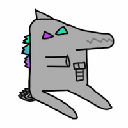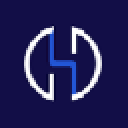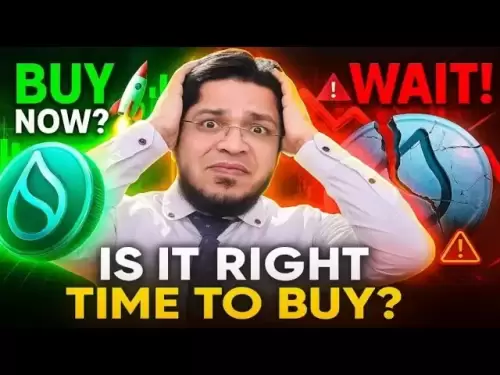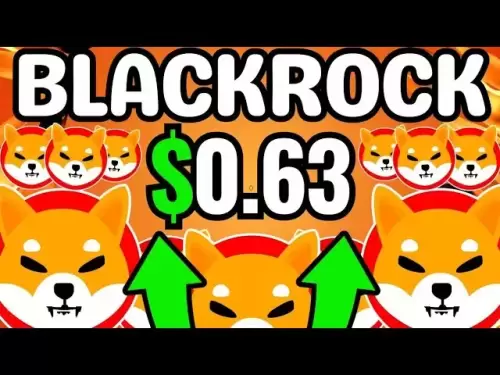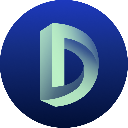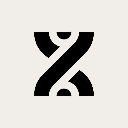-
 Bitcoin
Bitcoin $117700
-0.20% -
 Ethereum
Ethereum $3587
1.19% -
 XRP
XRP $3.422
-0.97% -
 Tether USDt
Tether USDt $1.000
-0.02% -
 BNB
BNB $733.3
0.69% -
 Solana
Solana $177.3
0.36% -
 USDC
USDC $0.9998
-0.01% -
 Dogecoin
Dogecoin $0.2446
1.42% -
 TRON
TRON $0.3183
-2.35% -
 Cardano
Cardano $0.8262
1.07% -
 Hyperliquid
Hyperliquid $44.37
-0.24% -
 Stellar
Stellar $0.4597
-0.87% -
 Sui
Sui $3.841
2.27% -
 Chainlink
Chainlink $18.44
3.20% -
 Hedera
Hedera $0.2658
1.54% -
 Bitcoin Cash
Bitcoin Cash $518.2
0.50% -
 Avalanche
Avalanche $24.38
4.08% -
 Shiba Inu
Shiba Inu $0.00001491
1.30% -
 Litecoin
Litecoin $112.7
10.87% -
 UNUS SED LEO
UNUS SED LEO $8.991
0.16% -
 Toncoin
Toncoin $3.183
-0.13% -
 Polkadot
Polkadot $4.377
3.56% -
 Uniswap
Uniswap $10.16
1.35% -
 Monero
Monero $325.1
2.08% -
 Ethena USDe
Ethena USDe $1.001
-0.01% -
 Bitget Token
Bitget Token $4.922
0.29% -
 Pepe
Pepe $0.00001343
3.62% -
 Dai
Dai $0.9999
-0.01% -
 Aave
Aave $319.5
-0.89% -
 Bittensor
Bittensor $416.3
1.23%
How to set SOL's grid trading parameters?
Grid trading on Solana involves setting buy/sell orders at predetermined levels to profit from volatility, requiring careful parameter setup and ongoing strategy adjustments.
Apr 19, 2025 at 05:14 am

Introduction to Grid Trading on Solana
Grid trading is a popular trading strategy among cryptocurrency enthusiasts, particularly those trading on the Solana (SOL) blockchain. This method involves setting up a series of buy and sell orders at predetermined price levels, creating a 'grid' of trades. The goal is to profit from the natural volatility of the market by buying low and selling high within a specified range. In this article, we will explore how to set up SOL's grid trading parameters effectively.
Understanding Grid Trading Parameters
Before setting up grid trading parameters for SOL, it's essential to understand the key components that you will need to configure. These include the upper and lower price bounds, grid size, investment amount, and profit-taking strategy. Each of these parameters plays a crucial role in determining the success of your grid trading strategy.
Setting the Upper and Lower Price Bounds
The first step in setting up your grid trading parameters for SOL is to determine the upper and lower price bounds. These bounds define the range within which your grid will operate. To set these bounds:
- Analyze the historical price data of SOL to identify a range that the cryptocurrency typically fluctuates within. This can be done using charting tools available on most trading platforms.
- Set the upper bound at a level slightly above the highest price you anticipate SOL reaching within your trading period.
- Set the lower bound at a level slightly below the lowest price you anticipate SOL reaching within your trading period.
By setting realistic bounds, you ensure that your grid remains active and can capitalize on market movements.
Determining the Grid Size
The grid size refers to the number of price levels at which you will place buy and sell orders within your defined range. A smaller grid size means fewer but larger trades, while a larger grid size means more but smaller trades. To determine the optimal grid size for SOL:
- Consider your risk tolerance. A larger grid size can spread out your risk but may also reduce potential profits per trade.
- Evaluate the volatility of SOL. More volatile assets may benefit from a larger grid size to capture more frequent price movements.
- Calculate the price interval between each grid level by dividing the total range (upper bound minus lower bound) by the number of grid levels you choose.
For example, if you set the upper bound at $100 and the lower bound at $80, and you decide on a grid size of 10, the price interval would be $2.
Setting the Investment Amount
The investment amount is the total capital you are willing to allocate to your grid trading strategy for SOL. This amount will be distributed across the various buy and sell orders within your grid. To set the investment amount:
- Determine your overall trading budget for SOL. This should be an amount you are comfortable risking in the market.
- Divide your investment across the grid levels. If you have a grid size of 10, for instance, you might allocate 10% of your total investment to each level.
It's important to ensure that your investment amount aligns with your risk management strategy and that you are not over-leveraging your position.
Configuring the Profit-Taking Strategy
The profit-taking strategy is crucial for realizing gains from your grid trading on SOL. There are several approaches to consider:
- Fixed profit percentage: Set a fixed percentage of profit at which you will close out a position. For example, you might decide to take profits when a position reaches a 5% gain.
- Trailing stop: Implement a trailing stop that moves with the price of SOL, allowing you to capture more gains as the price increases.
- Time-based exits: Set specific times at which you will close out positions, regardless of the current profit or loss.
Choose a strategy that aligns with your trading goals and market expectations. For instance, if you anticipate a rapid increase in SOL's price, a trailing stop might be more effective than a fixed profit percentage.
Implementing Grid Trading on a Solana Trading Platform
Once you have defined your grid trading parameters for SOL, the next step is to implement them on a trading platform that supports grid trading. Here's how to do it on a typical Solana trading platform:
- Log into your trading platform and navigate to the grid trading section.
- Select SOL as the asset you want to trade.
- Enter the upper and lower price bounds you determined earlier.
- Input the grid size and calculate the price intervals.
- Set the total investment amount and allocate it across the grid levels.
- Choose your profit-taking strategy and configure the settings accordingly.
- Review all parameters to ensure they align with your strategy.
- Activate the grid trading bot to start executing trades based on your parameters.
Monitoring and Adjusting Your Grid Trading Strategy
After setting up your grid trading parameters for SOL, it's crucial to monitor and adjust your strategy as market conditions change. Keep an eye on the following:
- Market volatility: If SOL's price becomes more volatile, you may need to adjust your grid size or bounds.
- Performance: Regularly review the performance of your grid trading strategy to ensure it is meeting your profit goals.
- Market news and events: Stay informed about any news or events that could impact SOL's price and adjust your strategy accordingly.
By continuously monitoring and tweaking your grid trading parameters, you can optimize your strategy for better results.
Frequently Asked Questions
Q: Can I use grid trading on any Solana trading platform?
A: Not all Solana trading platforms support grid trading. You should check with your chosen platform to see if they offer this feature and what specific parameters they allow you to set.
Q: How often should I adjust my grid trading parameters for SOL?
A: The frequency of adjustments depends on market conditions and your trading goals. Some traders adjust their parameters daily, while others may do so weekly or even monthly. It's important to find a balance that works for you.
Q: Is grid trading suitable for beginners?
A: Grid trading can be complex and requires a good understanding of market dynamics and risk management. While it can be suitable for beginners who are willing to learn, it's often recommended to start with simpler trading strategies before moving to grid trading.
Q: Can I combine grid trading with other trading strategies for SOL?
A: Yes, many traders combine grid trading with other strategies such as trend following or swing trading. This can help diversify your approach and potentially increase your chances of success.
Disclaimer:info@kdj.com
The information provided is not trading advice. kdj.com does not assume any responsibility for any investments made based on the information provided in this article. Cryptocurrencies are highly volatile and it is highly recommended that you invest with caution after thorough research!
If you believe that the content used on this website infringes your copyright, please contact us immediately (info@kdj.com) and we will delete it promptly.
- XRP Mining, the GENIUS Act, and Coin Holders: A New Era?
- 2025-07-20 06:30:12
- Arctic Pablo Coin: Navigating the Icebound Estates Presale and Token Burn Strategy
- 2025-07-20 06:30:12
- Arctic Pablo Coin's Myth-Themed Presale: Icebound Estates and Beyond!
- 2025-07-20 06:50:12
- Snorter Token's Presale Success: Riding the GENIUS Act Wave in the Crypto World
- 2025-07-20 06:50:12
- PENGU Token's Breakout Momentum: Riding the Wave in a Bearish Market
- 2025-07-20 07:10:12
- Crypto's 100x Hunt in 2025: Beyond the Hype
- 2025-07-20 07:10:12
Related knowledge

How to avoid common crypto investment mistakes?
Jul 13,2025 at 01:35am
Understanding the Risks of Crypto InvestmentInvesting in cryptocurrency can be highly rewarding, but it also comes with significant risks. One of the ...

What is a long-short crypto strategy?
Jul 15,2025 at 10:56am
Understanding the Basics of a Long-Short Crypto StrategyA long-short crypto strategy is an investment approach where traders simultaneously take long ...

What is a long-short crypto strategy?
Jul 11,2025 at 01:28pm
Understanding the Basics of Long-Short Crypto StrategyA long-short crypto strategy is an investment approach where traders take both long and short po...

How to use the RSI indicator for crypto?
Jul 12,2025 at 03:56pm
Understanding the RSI Indicator in Cryptocurrency TradingThe Relative Strength Index (RSI) is a momentum oscillator used to measure the speed and chan...

Is copy trading a good strategy for crypto beginners?
Jul 12,2025 at 08:28am
Understanding Copy Trading in the Cryptocurrency MarketCopy trading is a strategy where novice traders replicate the trades of experienced investors a...

How to build a crypto portfolio with $1000?
Jul 13,2025 at 08:14pm
Understanding the Basics of Cryptocurrency InvestmentBuilding a crypto portfolio with $1000 starts with understanding the fundamentals of cryptocurren...

How to avoid common crypto investment mistakes?
Jul 13,2025 at 01:35am
Understanding the Risks of Crypto InvestmentInvesting in cryptocurrency can be highly rewarding, but it also comes with significant risks. One of the ...

What is a long-short crypto strategy?
Jul 15,2025 at 10:56am
Understanding the Basics of a Long-Short Crypto StrategyA long-short crypto strategy is an investment approach where traders simultaneously take long ...

What is a long-short crypto strategy?
Jul 11,2025 at 01:28pm
Understanding the Basics of Long-Short Crypto StrategyA long-short crypto strategy is an investment approach where traders take both long and short po...

How to use the RSI indicator for crypto?
Jul 12,2025 at 03:56pm
Understanding the RSI Indicator in Cryptocurrency TradingThe Relative Strength Index (RSI) is a momentum oscillator used to measure the speed and chan...

Is copy trading a good strategy for crypto beginners?
Jul 12,2025 at 08:28am
Understanding Copy Trading in the Cryptocurrency MarketCopy trading is a strategy where novice traders replicate the trades of experienced investors a...

How to build a crypto portfolio with $1000?
Jul 13,2025 at 08:14pm
Understanding the Basics of Cryptocurrency InvestmentBuilding a crypto portfolio with $1000 starts with understanding the fundamentals of cryptocurren...
See all articles
















